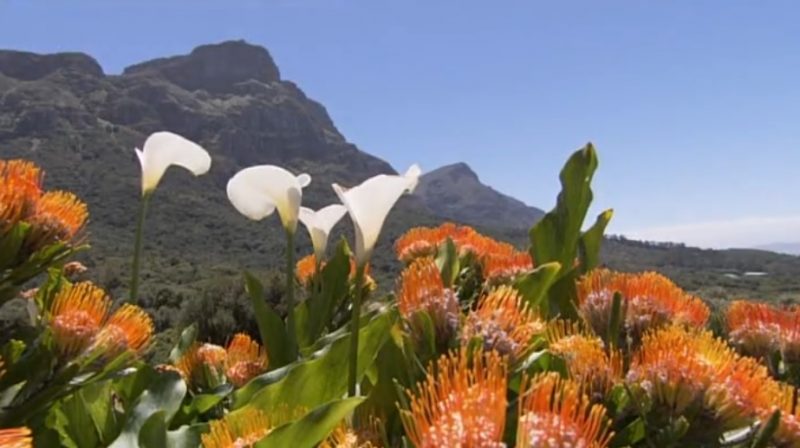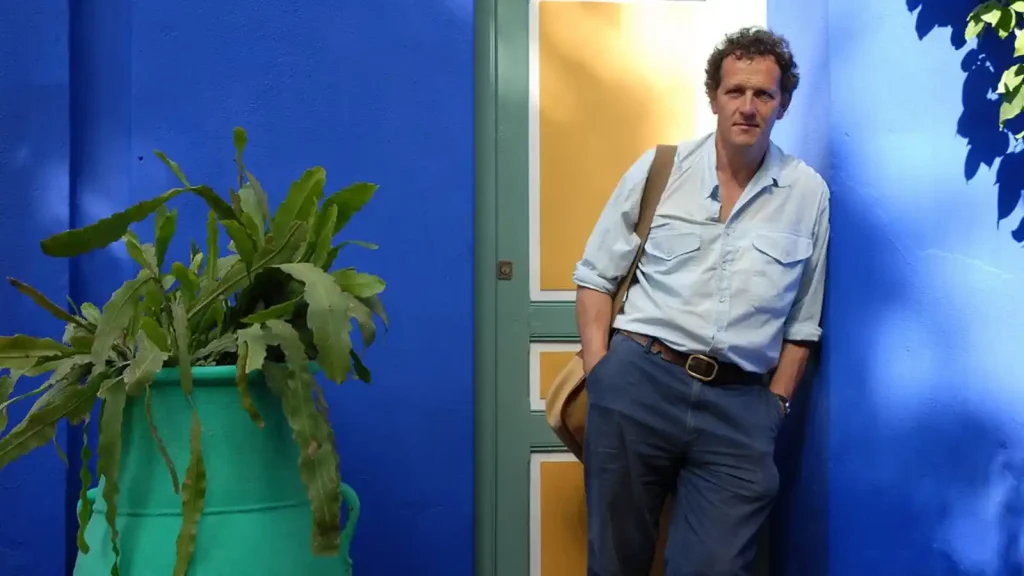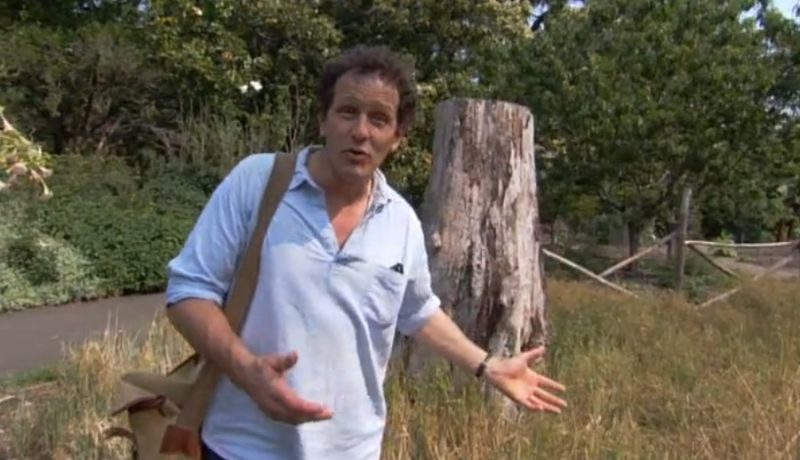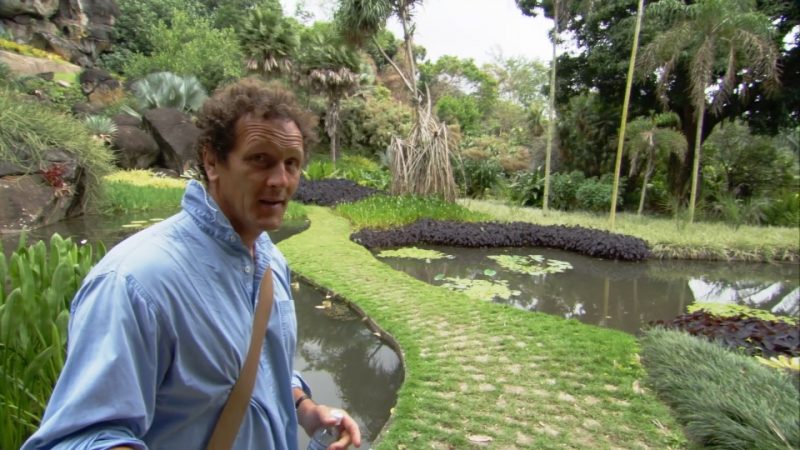In Around the World in 80 Gardens ep 8, Monty Don takes viewers on a captivating journey through the rich landscapes of South Africa. His first stop is the renowned Kirstenbosch Botanic Gardens, nestled at the foot of Cape Town’s Table Mountain. This world-class garden is more than just a collection of plants; it’s a celebration of the region’s unique biodiversity. As Monty explores the lush, carefully curated displays, he marvels at the majestic King Protea, South Africa’s national plant, whose regal blossoms stand tall, like proud symbols of the country’s botanical heritage.
The beauty of Kirstenbosch doesn’t end with the Protea. The garden is home to a wide array of South African flora, with plants that have evolved to thrive in this rugged, yet beautiful part of the world. The diversity of species here offers a window into South Africa’s rich ecological tapestry, showcasing both familiar and lesser-known plants. Monty’s enthusiasm is infectious as he walks through the paths, his love for the natural world evident in every step he takes.
Leaving the structured beauty of Kirstenbosch behind, Monty travels to the Drakensberg Mountains, where nature reveals itself in its raw, untouched form. Here, the landscape is a contrast to the manicured gardens of Cape Town, offering a glimpse of South Africa’s wild flora in its natural habitat. The Drakensberg, with its towering peaks and vast valleys, is home to many species of native plants, some of which can only be found in these remote areas. Monty is visibly moved by the rugged beauty of the landscape, where plants grow without human intervention, shaped only by the forces of nature.
Yet, it’s not the grand gardens or the wild mountains that capture Monty’s heart the most. Surprisingly, his favorite stop on this journey is a humble vegetable garden in Thembisa, a township on the outskirts of Johannesburg. In this small school garden, Monty discovers something profoundly moving – a community’s deep connection to the land, despite the hardships they face. The vegetable patch, lovingly tended by students and teachers, represents resilience and hope. For Monty, this simple garden embodies the true spirit of gardening – the power to bring people together and provide nourishment, both for the body and the soul.
The journey through South Africa also offers Monty a chance to reflect on the country’s gardening history, which has been shaped by centuries of cultural influences. From the Dutch settlers in the 19th century, who introduced European gardening techniques, to the modern-day blending of indigenous and international styles, South Africa’s gardens tell a story of change and adaptation. Monty is fascinated by how these diverse influences have created a unique gardening culture that reflects the country’s complex history.
Throughout his travels, Monty not only highlights the beauty of the gardens but also delves into the deeper meaning they hold for the people who care for them. Gardens, in Monty’s eyes, are more than just collections of plants. They are spaces where culture, history, and nature intersect, offering a place for reflection, connection, and even healing. Whether it’s the grand botanical gardens of Cape Town or a modest vegetable patch in a township, each garden tells a story – and it’s these stories that Monty is most interested in sharing with his audience.
Around the World in 80 Gardens is not just a show about plants; it’s a celebration of human creativity and resilience, as seen through the lens of gardening. Monty Don’s travels take him to every corner of the globe, from the ancient gardens of Japan to the cutting-edge designs of modern Europe, but no matter where he goes, the essence of gardening remains the same – it’s a way for people to connect with nature and, ultimately, with each other.
In this episode, South Africa serves as a perfect example of how gardens can reflect the soul of a nation. From the pristine beauty of Kirstenbosch to the untamed wilderness of the Drakensberg, and finally to the hopeful vegetable garden in Thembisa, Monty’s journey is a reminder that gardening is not just about plants – it’s about people, history, and the land we share.
With every episode, Monty Don invites viewers to see the world through the eyes of a gardener. He shows us that no matter where you are, whether in a grand botanical garden or a small urban plot, the act of tending to the earth is a universal expression of care, creativity, and community. Through Monty’s eyes, gardens become more than just green spaces; they become living stories, waiting to be discovered. And in South Africa, as in every other country he visits, those stories are rich, varied, and deeply meaningful.
Around the World in 80 Gardens ep 8
Kirstenbosch National Botanical Garden: A Living Tribute to South Africa’s Unique Flora
Tucked away at the eastern foot of Cape Town’s iconic Table Mountain, Kirstenbosch National Botanical Garden is more than just a beautiful space—it’s a living treasure trove of South Africa’s botanical heritage. As one of ten national botanical gardens in the country, Kirstenbosch plays a vital role in preserving and showcasing the diverse plant life of South Africa, representing five of the nation’s six unique biomes. Administered by the South African National Biodiversity Institute (SANBI), Kirstenbosch has been at the forefront of conservation since its inception.
Founded in 1913, Kirstenbosch is internationally recognized as the first botanical garden in the world established with the purpose of preserving a country’s indigenous flora. This groundbreaking mission set the stage for what Kirstenbosch would become: a sanctuary for South Africa’s rare and beautiful plant species. The garden places a strong emphasis on cultivating native plants, particularly those unique to the Cape region, creating a space where the country’s natural beauty is nurtured and protected for future generations.
Stepping into Kirstenbosch feels like entering a different world, one where nature reigns supreme. The garden boasts an impressive variety of plants, from the iconic fynbos of the Western Cape to the hardy species of the arid Karoo. A large conservatory, known as The Botanical Society Conservatory, serves as a showcase for plants from various ecosystems, including savanna and desert biomes. This diversity highlights the sheer range of climates and environments found in South Africa, each represented by its unique flora.
Among the most breathtaking sights in Kirstenbosch are the collections of proteas, a group of plants that have become synonymous with the Cape Floral Kingdom. Their striking, sculptural blooms draw the eye, inviting visitors to marvel at the diversity of form and color. Proteas are more than just pretty flowers—they are symbols of resilience, thriving in the challenging environments of the Cape. Kirstenbosch’s protea collection is one of the garden’s crown jewels, offering a glimpse into the rich biodiversity that South Africa is so proud to protect.
But Kirstenbosch’s history stretches back much further than its establishment as a botanical garden. In 1660, during the early days of the Dutch colony at the Cape, Jan van Riebeek ordered the planting of a hedge made from Wild Almond and brambles. This hedge was meant to serve as a defensive barrier around the colony, providing some measure of protection from potential threats. Remarkably, sections of this historical hedge, known as Van Riebeek’s Hedge, still stand today, preserved within the garden as a Provincial Heritage Site. It serves as a tangible reminder of the area’s colonial past, adding another layer of history to the garden’s rich narrative.
For centuries, the land that is now Kirstenbosch had many uses, including the harvesting of timber during the colonial period. However, it wasn’t until the early 20th century that the vision for a botanical garden dedicated to preserving South Africa’s unique flora took shape. And while the garden’s mission is deeply rooted in conservation, it also embraces education and research, offering visitors and scholars alike the chance to learn about the incredible diversity of plant life in the region.
The name “Kirstenbosch” has an intriguing history as well. The “Kirsten” part is believed to come from J.F. Kirsten, the manager of the land in the 18th century, while “bosch” is a Dutch word for forest or bush. Together, the name speaks to both the garden’s past as a managed estate and its present as a lush, forested refuge for native plants.
What makes Kirstenbosch truly special is not just its beauty, but the sense of connection it fosters between people and nature. Visitors from all over the world come to experience the peace and tranquility of the garden, walking its meandering paths, enjoying the cool shade of its ancient trees, and discovering the stories behind the plants that thrive here. For many, it’s a place of reflection and renewal, a space where the natural world can be appreciated in all its glory.
Kirstenbosch’s role in preserving South Africa’s natural heritage cannot be overstated. By focusing on indigenous plants, the garden not only protects endangered species but also educates the public about the importance of biodiversity. In a world where many ecosystems are under threat, Kirstenbosch stands as a beacon of hope, showing what can be achieved when humans work in harmony with nature.
As you explore Kirstenbosch, it’s impossible not to feel a sense of wonder. Whether you’re admiring the bold blooms of the protea, walking among towering trees, or tracing the history of Van Riebeek’s Hedge, the garden offers something for everyone. It’s a place where history, conservation, and natural beauty come together, creating an experience that leaves a lasting impression on all who visit.
In a country as diverse and vibrant as South Africa, Kirstenbosch serves as a reminder of the importance of preserving what makes each region unique. Through its commitment to indigenous plants and its rich history, Kirstenbosch National Botanical Garden continues to be a vital part of South Africa’s environmental and cultural heritage. It’s a garden that invites you to pause, reflect, and appreciate the intricate beauty of the world around us, one plant at a time.
Conclusion Around the World in 80 Gardens ep 8
In conclusion, Monty Don’s journey through South Africa in Around the World in 80 Gardens reveals the profound connection between people, nature, and the landscapes they nurture. From the breathtaking beauty of Kirstenbosch’s curated botanical treasures to the untamed wilderness of the Drakensberg Mountains, each garden offers a window into the country’s soul. But it is perhaps the modest vegetable garden in Thembisa that leaves the deepest impression—a reminder that gardening is more than an aesthetic pursuit; it is an act of resilience, community, and hope.
Kirstenbosch, in particular, stands as a symbol of South Africa’s commitment to preserving its unique flora. Its mission to conserve indigenous plants is not just about protection but about telling a story—a story of history, adaptation, and cultural evolution. The garden’s ability to blend history with modern conservation makes it a living testament to the delicate balance between nature and humanity. It’s a place where the past meets the future, where visitors can pause and reflect on the beauty and significance of South Africa’s natural world.
As Monty Don reminds us, gardens are more than just collections of plants—they are reflections of the people who care for them, and the histories that shape them. Whether walking through the grand botanical landscapes of Kirstenbosch or admiring the resilience of a community garden, we are reminded that gardening is a universal language, one that speaks of care, creativity, and connection. In South Africa, this language tells a story of hope, endurance, and the beauty that emerges when nature and humanity work together. Each garden holds a piece of that story, inviting us to listen, learn, and be inspired.
FAQ Around the World in 80 Gardens ep 8
Q: What makes Kirstenbosch National Botanical Garden unique compared to other gardens in South Africa?
A: Kirstenbosch is unique because it was the first botanical garden in the world dedicated to preserving a country’s indigenous flora. Nestled at the foot of Table Mountain, it showcases South Africa’s rich biodiversity, with a focus on native plants like the iconic King Protea. Its blend of conservation and history makes it a living tribute to the country’s natural heritage.
Q: What types of plants can be found at Kirstenbosch National Botanical Garden?
A: Kirstenbosch features a vast array of South African plants, including the stunning protea collection, fynbos, and other native species from diverse biomes like savanna, desert, and the Karoo. The garden’s Botanical Society Conservatory also houses plants from various ecosystems, offering visitors a glimpse into the country’s wide-ranging flora.
Q: Why does Monty Don admire the vegetable garden in Thembisa more than the larger gardens?
A: Monty Don is deeply moved by the humble vegetable garden in Thembisa because it represents the resilience and hope of the local community. Despite facing challenges, the students and teachers lovingly tend to the garden, making it a symbol of how gardening can bring people together and nourish both the body and the spirit.
Q: How does the Drakensberg Mountains’ flora differ from that of Kirstenbosch?
A: The flora of the Drakensberg Mountains is wilder and more untouched than the carefully curated displays of Kirstenbosch. The Drakensberg offers a glimpse into South Africa’s native plants thriving in their natural habitat, with species that are adapted to the region’s rugged, untamed beauty.
Q: What historical significance does Van Riebeek’s Hedge hold in Kirstenbosch?
A: Van Riebeek’s Hedge, planted in 1660, was created to protect the perimeter of the Dutch colony at the Cape. Today, sections of this hedge still stand in Kirstenbosch, preserved as a Provincial Heritage Site, reminding visitors of the area’s colonial past and adding historical depth to the garden’s natural beauty.




